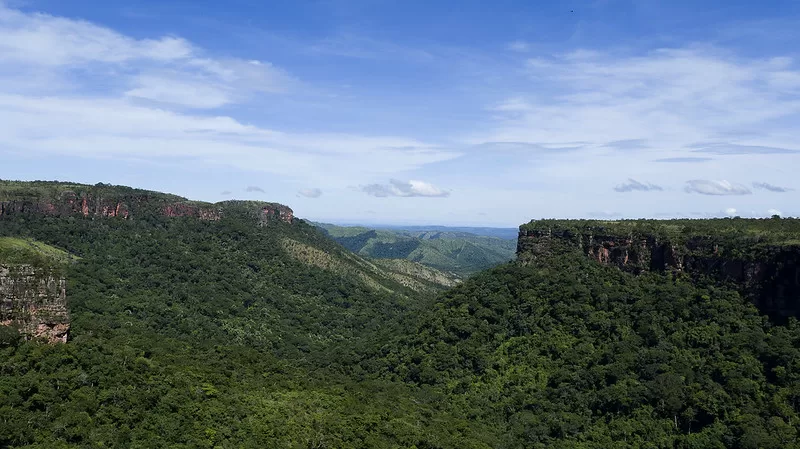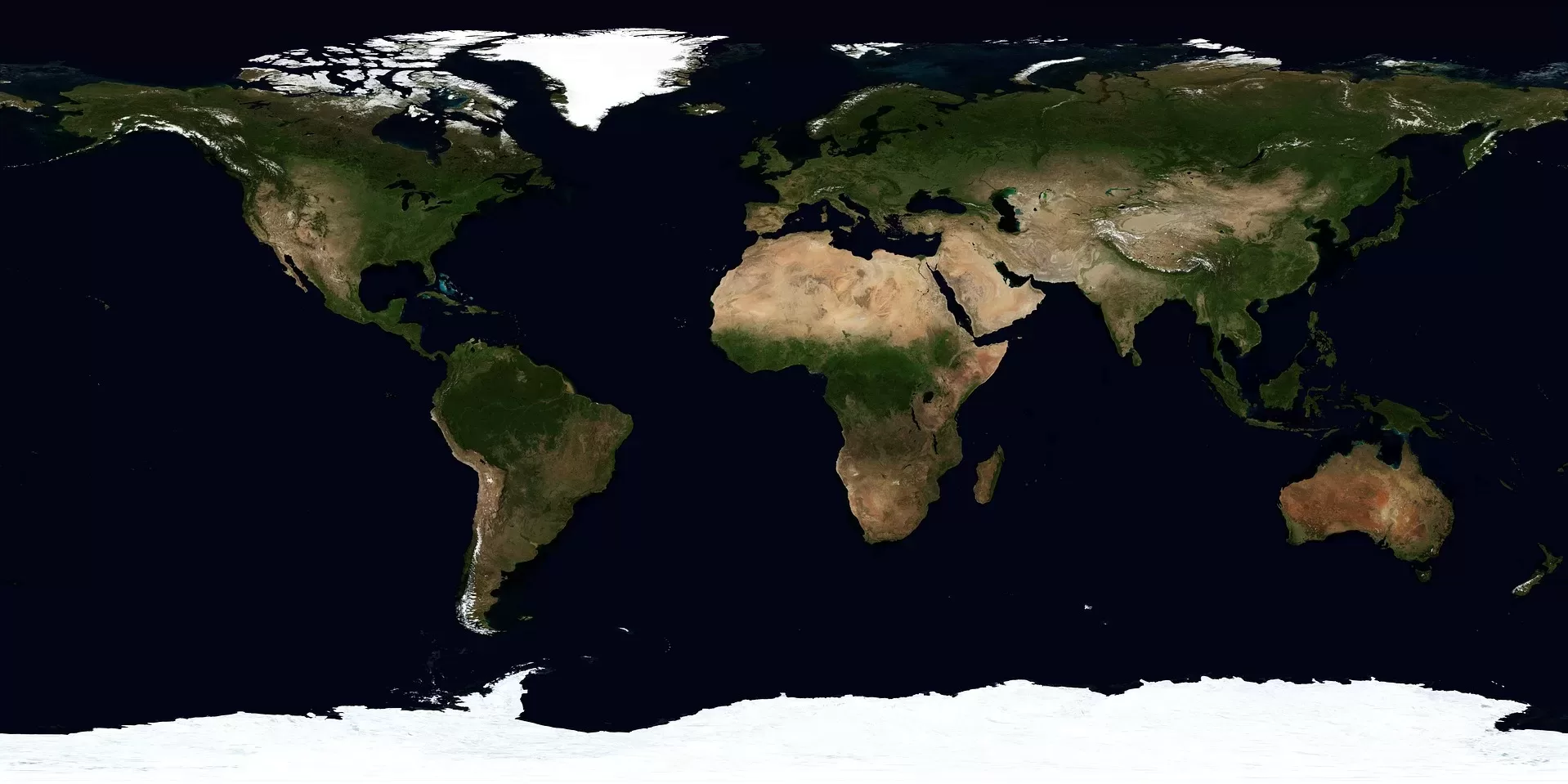Brazil is a country of unparalleled diversity in landscapes, ecosystems, and natural heritage, reflecting the richness of its flora, fauna, and geography. Its national and state parks serve as vital areas for biodiversity conservation, while also providing unique experiences of contact with nature, adventure, and culture. From the vast aquatic ecosystems of the Pantanal to the rocky formations and caves of regions such as Serra da Capivara and Chapada dos Veadeiros, each park reveals a different facet of Brazil’s extensive variety of environments. Below, we present descriptions of some of these remarkable sites, highlighting their ecological, historical, and touristic significance.

Pantanal Matogrossense National Park (Mato Grosso and Mato Grosso do Sul)
Area: Approximately 135,000 hectares
Biome: Pantanal
Description: One of the largest and most iconic wetland ecosystems in the world. The park preserves vast biodiversity, including endangered species such as the jaguar, giant otter, jabiru stork, and marsh deer. The Pantanal is a wildlife sanctuary with rivers, lakes, swamps, and cerrado areas. It is ideal for wildlife watching, fishing, boat tours, and ecotourism.
Highlights: Véu de Noiva Waterfall, Cuiabá River, Piquiri and Pó Broa Rivers, along with rich aquatic and terrestrial flora and fauna.
Significance: UNESCO World Heritage Site and one of the most biodiverse regions on the planet.
Terra Ronca State Park (Goiás)
Area: Approximately 57,000 hectares
Biome: Cerrado
Description: Renowned for its impressive limestone rock formations, caves, and grottos with unique shapes. It is a major speleological site, home to several caves open for visitation, including Rei do Mato, Diabo, and Santa Isabel.
Highlights: Caves, waterfalls, and stunning limestone cliffs. Also known for adventure tourism, including caving, hiking, and waterfall bathing.
History: Second-largest cave system in Brazil, established to protect biodiversity and geological heritage.
Access: Primarily through Guarani de Goiás.
Jalapão State Park (Tocantins)
Area: Approximately 34,000 hectares
Biome: Cerrado
Description: Famous for its breathtaking landscapes featuring golden sand dunes, crystal-clear rivers, waterfalls, and natural springs with high-pressure warm water (fervedouros). It is a top ecotourism and adventure travel destination, ideal for camping, hiking, rafting, canyoning, and nature observation.
Highlights: Rio do Sono Springs, Tocantins Waterfall, and park dunes.
Significance: Protects one of the most scenic and biodiverse regions of the Brazilian cerrado.
Chapada das Mesas National Park (Maranhão)
Area: Approximately 160,000 hectares
Biome: Cerrado and Caatinga
Description: Known for its stunning rock formations, waterfalls, caves, and clear rivers. Offers trails, canyons, and rich biodiversity.
Highlights: Fumaça Waterfall, Chapéu Hill, Santuário Waterfall, and Morro Cave.
Activities: Hiking, birdwatching, canyoning, and ecotourism.
History: Created in 2005 as part of a regional conservation mosaic.
Chapada Diamantina National Park (Bahia)
Area: Approximately 152,000 hectares
Biome: Caatinga, Cerrado, and Atlantic Forest
Description: One of Brazil’s most iconic destinations, with extraordinary geological formations, caves, waterfalls, valleys, and diverse biodiversity. Notable for scenic beauty, hiking trails, adventure sports, and cultural tourism.
Highlights: Pai Inácio Hill, Lapa Doce Cave, Fumaça and Pratinha Waterfalls, Lapa Doce and Torrinha Caves.
History: Established in 1980, with significant historical value due to its diamond mining past.
Chapada dos Guimarães National Park (Mato Grosso)
Area: Approximately 33,000 hectares
Biome: Cerrado
Description: Features remarkable rock formations, deep canyons, waterfalls, and scenic viewpoints. Offers diverse flora and fauna and attracts tourists for ecotourism, hiking, birdwatching, and landscape photography.
Highlights: São Jerônimo Hill, Rio Claro Canyon, Véu de Noiva Waterfall, Paredão Cliffs, and Alegria Waterfall viewpoint.
History: Created in 1988, it is part of Mato Grosso’s main tourist circuit with ecological and geological importance.
Activities: Hiking, walking trails, waterfall visits, buggy tours, and ecotourism.
Chapada dos Veadeiros National Park (Goiás)
Area: Approximately 65,000 hectares
Biome: Cerrado
Description: One of Brazil’s best-known parks, featuring crystalline rock formations, waterfalls, and unique biodiversity. A UNESCO World Heritage Site due to its ecological and geological relevance.
Highlights: Couros Waterfalls, Preto River Falls, and the famous Janela do Céu viewpoint. Includes trails leading to natural pools and caves.
History: Created in 1961, it is a hub for ecotourism, adventure, birdwatching, and spiritual retreat activities.
Activities: Trekking, waterfall bathing, camping, birdwatching, and meditation.
Serra da Capivara National Park (Piauí)
Area: Approximately 129,000 hectares
Biome: Caatinga
Description: Noted for its vast archaeological heritage, the park houses thousands of prehistoric rock paintings, some over 25,000 years old, along with unique rock formations and archaeological sites.
Highlights: Caves and sites such as Pedra Furada, considered one of the earliest signs of human presence in the Americas.
History: Established in 1979, it became a UNESCO World Heritage Site in 1991 due to its significance in the history of human settlement.
Activities: Guided tours, hiking trails, rock art viewing, and archaeological research.
Emas National Park (Goiás)
Area: Approximately 55,000 hectares
Biome: Cerrado
Description: A major wildlife sanctuary in Brazil, renowned for its biodiversity and role in preserving the cerrado. Named after the large, flightless rhea bird (ema) found in the region.
Highlights: Vast grasslands, rivers, and lakes, with endangered species such as maned wolf, giant anteater, and giant armadillo.
History: Created in 1986, the park is a key center for ecological and conservation research.
Activities: Wildlife safaris, animal observation, hiking, and ecotourism.
Nascentes do Rio Parnaíba National Park (Piauí)
Area: Approximately 6,600 hectares
Biome: Caatinga and Cerrado
Description: Protects the sources of the Parnaíba River, one of Brazil’s major rivers. Known for its caatinga vegetation, clear rivers, and rock formations.
Highlights: Springs, waterfalls, and trails through preserved areas feeding the river.
History: Created in 2002 to conserve biodiversity and water quality.
Activities: Hiking, birdwatching, waterfall bathing, and ecological tourism.
Anavilhanas National Park (Amazonas)
Area: Approximately 400,000 hectares
Biome: Amazon Rainforest and freshwater river ecosystems
Description: One of the world’s largest river archipelagos, comprising thousands of islands on the Rio Negro. Extremely biodiverse, with unique species of flora and fauna.
Highlights: Rivers, lakes, streams, fish species, caimans, pink dolphins, toucans, and kingfishers. Ideal for boat trips, wildlife viewing, and ecotourism.
Significance: Protects floodplain and blackwater ecosystems crucial for the Amazon hydrological cycle.
Activities: Boat tours, diving, nature observation, and sport fishing.
Sete Cidades National Park (Piauí)
Area: Approximately 6,222 hectares
Biome: Caatinga
Description: Known for its rock formations resembling ancient cities, along with lagoons and rivers. Rich archaeological site with prehistoric rock art over 6,000 years old.
Highlights: Turtle Rock, lagoons, canyons, and archaeological sites.
History: Established in 1961 and declared a UNESCO World Heritage Site in 2024.
Activities: Hiking, visiting rock paintings, adventure tourism, and environmental education.
Ubajara National Park (Ceará)
Area: Approximately 62,751 hectares
Biome: Caatinga
Description: Known for the famous Ubajara Cave, with stalactites, stalagmites, and underground rivers. The park also features waterfalls, streams, and ecological trails.
Highlights: Ubajara Cave, Cafundó Waterfalls, rivers, and leisure areas. A cable car offers panoramic views from the top of the park.
History: Created in 1959, it is one of Ceará’s leading ecotourism attractions.
Activities: Cave tours, hiking, waterfall bathing, and cable car rides (when operational).
Araguaia National Park (Tocantins)
Area: Approximately 350,000 hectares
Biome: Cerrado and Araguaia River wetlands
Description: Preserves vast cerrado areas and wetlands along the Araguaia River. It is vital for conserving species typical of both the cerrado and aquatic environments.
Highlights: Floodplains, river islands, native fish, birds, and mammals. Noted for its rich aquatic and terrestrial biodiversity.
History: Established in 2001 to protect the local ecosystem and promote sustainable ecotourism.
Activities: Boat tours, birdwatching, fishing, and hiking.
Lençóis Maranhenses National Park (Maranhão)
Area: Approximately 155,000 hectares
Biome: Sand dunes and freshwater lagoons
Description: One of Brazil’s most unique ecosystems, featuring white sand dunes and seasonal freshwater lagoons formed by rain. Offers surreal and scenic landscapes.
Highlights: Lagoa Azul, Lagoa Bonita, Lagoa Verde, and dunes up to 40 meters high.
History: Created in 1981 and designated a UNESCO World Heritage Site in 2012.
Activities: Hiking, swimming in lagoons, 4×4 tours, photography, and nature observation.
Fernando de Noronha Marine National Park (Pernambuco)
Area: Approximately 10,929 hectares
Biome: Marine
Description: A UNESCO World Heritage Site composed of volcanic islands and islets. Famous for crystal-clear waters, coral reefs, rare marine biodiversity, and pristine beaches.
Highlights: Natural pools, scuba diving, swimming with dolphins, turtles, and lemon sharks. Includes Baía do Sancho, ranked among the world’s best beaches.
History: Created in 1988 with strict environmental control for sustainable tourism.
Activities: Scuba diving, snorkeling, wildlife observation, hiking, and ecotourism.
Brazil’s national and state parks are natural treasures of extraordinary biodiversity and scenic beauty. They play a vital role in environmental preservation and sustainable tourism development. Each protected area offers a unique experience, whether through striking geological formations, rich ecosystems, or cultural and archaeological heritage. Ensuring their preservation is essential for future generations and for maintaining the planet’s ecological balance. Investing in their protection and promoting responsible visitation are key steps toward sustainable development and the conservation of Brazil’s natural and cultural wealth.

